Which is it- an Egret or a Heron?
The answer is.....”Yes”!!
In an article for Audubon Magazine, the renowned Kenn Kaufman addresses that question. You can read the piece here but I’ll summarize it with these direct quotes from the larger article. “The overall framework for how we classify birds has not changed much for a long time, and you may have memorized it in high school biology. “ (order, family, genus, species.) “Our modern system of classification and scientific names for birds and other animals dates back to 1758, when Carolus Linnaeus published the 10th edition of his Systema Naturae.“ This system for classifying things was based on superficial similarity. For the past few decades, molecular studies have been used to better understand the evolution of birds and other living things and their relationships to each other. What we now know about the birds featured in today’s post is.... “when it comes to the difference between herons and egrets—well, those really are just different words for the same darned birds. There isn’t any taxonomic difference.“ In the end, Kenn says, birds’ names don’t really matter. What does matter is appreciating each bird for its own inherent beauty.
Egret/Heron #1: With that being said, one recent morning at El Rio I had a “Four Heron Day”, or perhaps a “Four Egret Day”! Each one of these birds is uniquely beautiful. An old standby that morning was the Green Heron.
Green Herons are relatively short and stocky compared to other herons and egrets. Their legs are short and their neck is usually drawn into their body. Male and female adults all look the same, with the green back and chestnut neck and breast. They do their hunting from a motionless position and don’t generally wade and hunt like larger Egrets and Herons do.
After feeding on a few fish, the Green Heron returned to shore and found another perch spot on a different dead tree. Later that morning, I was able to capture this bird actively hunting and that will be the subject for an upcoming post.
Egret/Heron #2: The most recent member of the Herons and Egrets to arrive in Tucson at El Rio was the Snowy Egret. They are more readily seen during the fall and winter months and this Snowy has been at El Rio for several weeks now. Snowy Egrets produce long, filmy feathers on their backs, necks, and heads that were once extremely coveted by the fashion industry in America in the late 1800’s. This led to the killing of many Snowy Egrets until legal reforms helped to halt the practice. Snowy Egrets have a black bill and black legs with bright yellow feet. The horizontal lines across this snow-white bird are reflections of the ripples of water in the dark and shallow pond.
Snowy Egrets look like a smaller version of Great Egrets and, even at adult size, some people think they are just seeing a juvenile Great Egret. However, these are two different species. Size at a distance can be hard to judge, but the difference in bill color is easily seen and will help to identify the birds. In the next shot, you can see how much smaller the Snowy is compared to the Great Egret but note the bill color.
Egret/Heron #3: The Great Egret is about two feet long, from bill to tail and stands over three feet tall. Its wingspan is well over four feet. As big as it is though, the Great Egret weighs just two pounds. Here it was preening its feathers. Its clean white color is decorated by the reflections of the rippling waves in the dark pond. The egret’s head is upside down while preening- you can see its eye at the ‘bottom’ of the head in that position.
Egret/Heron #4: Here is another size comparison as a Great Blue Heron strolls past the Snowy Egret. Great Blue Herons dwarf the Snowy Egrets and appear much more substantial then a Great Egret. A Great Blue Heron is larger and heavier than a Great Egret and has a wider wingspan.
You can get a sense of the size comparison of the Great Blue Heron and the Great Egret in the following photo. More significantly this shot captures another difference between the two species. The Great Egret had caught one of the few remaining large koi in the lake but the larger Great Blue Heron decided to take the fish from the Egret. It charged the Great Egret rapidly, causing the Egret to walk out of the lake, drop its catch on the edge of the water and then continue walking away. In the photo below, the Great Blue had wasted no time and had already swallowed the large fish before turning back into the lake. I’ll share more detail of this encounter and other bullying behavior by this one bird in a follow-up post.
There was a second Great Blue Heron in the lake, by that morning really just a small pond. The two birds were both juveniles, not yet in adult plumage. The first bird- the one that pirated the fish from the Great Egret- was extremely territorial. It aggressively hassled the second bird repeatedly. In the shot below, the first, aggressive Great Blue had just walked across the lake towards the other Great Blue, then walked along the shore, and then flew even closer to the ‘weaker’ bird. Airborne, it put on the brakes and landed at the edge of the pond before continuing to walk towards the second Heron.
The second Great Blue Heron quickly exited the pond and flew over to the edge of the tamarisk trees beyond the water’s edge. The first Great Blue Heron was satisfied with that. Once it finally turned and returned to the water, the second Heron slowly made its way back into the pond.
I still am not sure whether to call that morning a 4-Heron day or a 4-Egret day. Either way, it was a very good morning. I’ve promised you a post on the fishing behavior of the Green Heron and the bullying behavior of the Great Blue Heron. Stay tuned!!



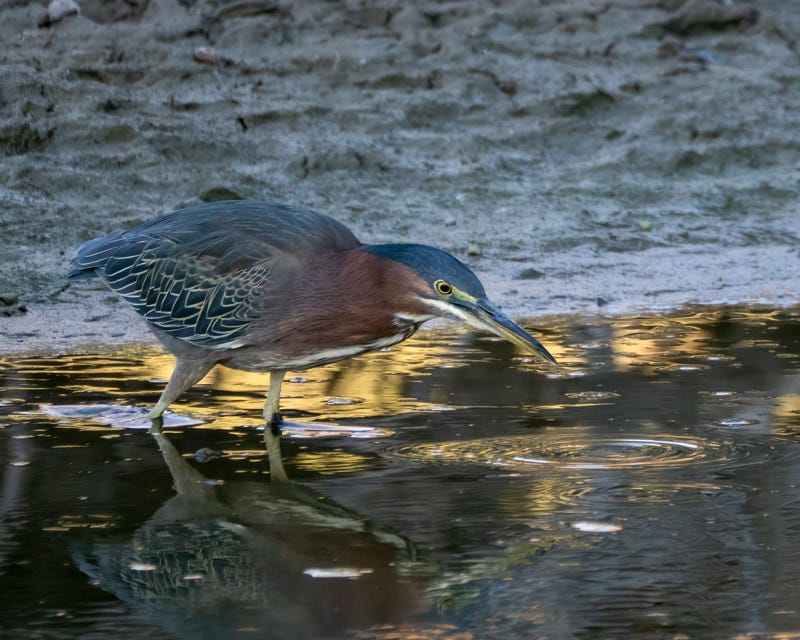

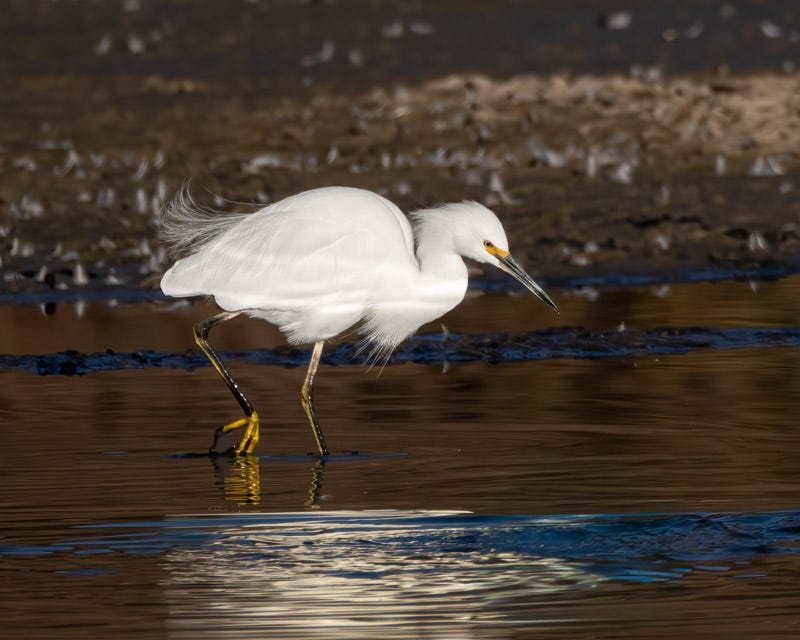
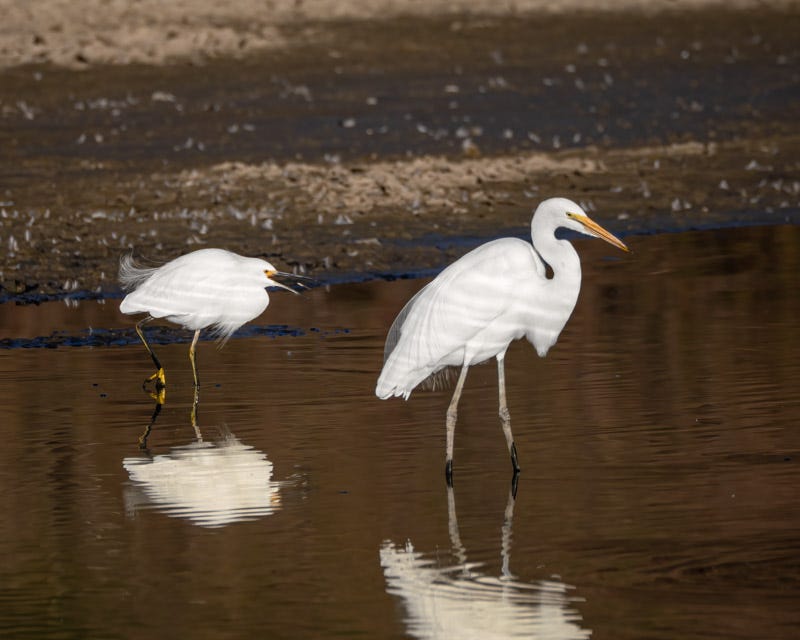
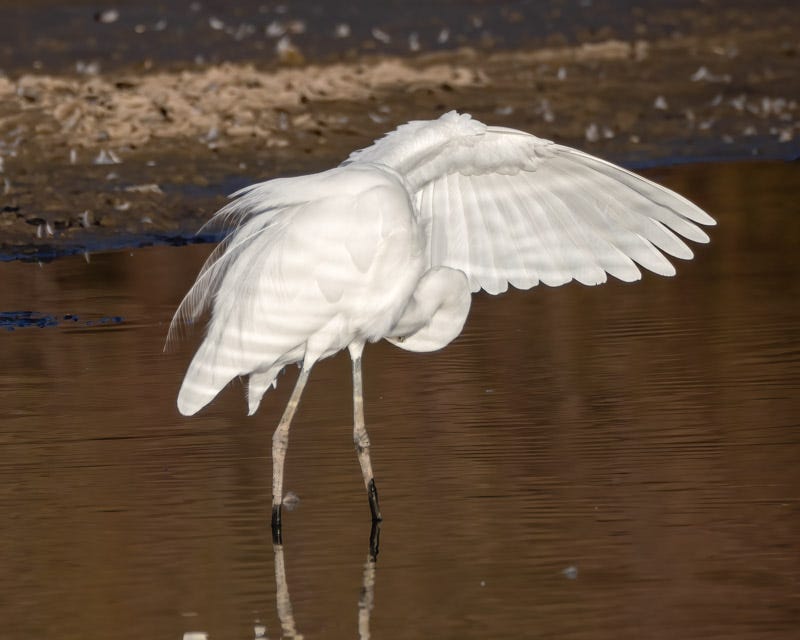


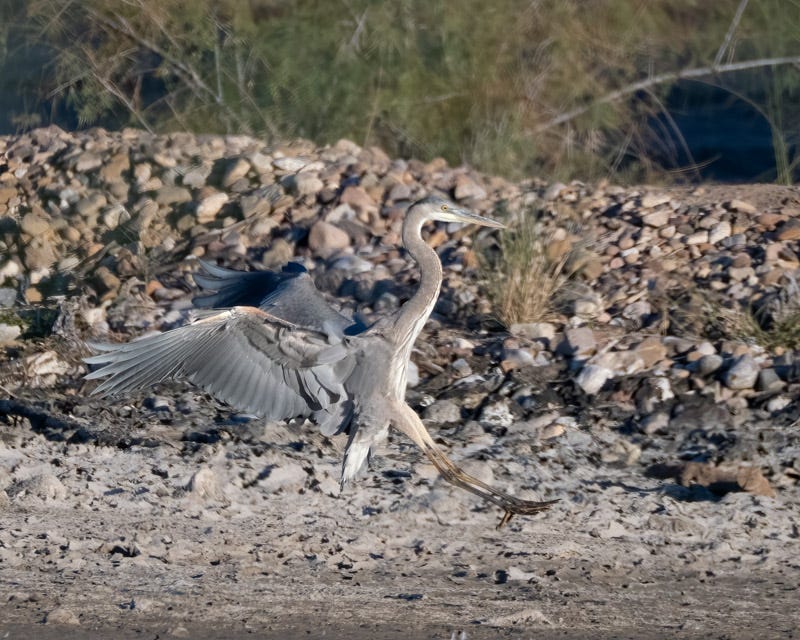
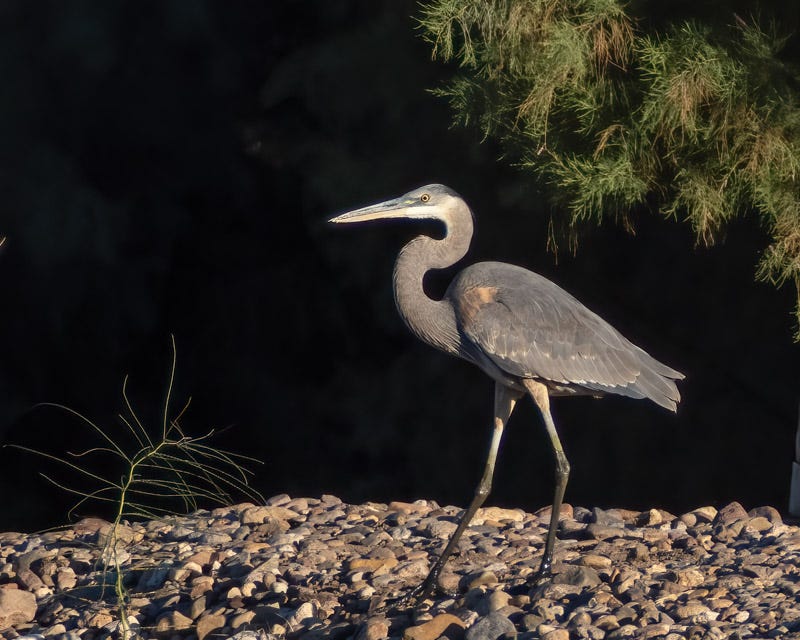
Excellent pictures and narrative.
What beautiful pictures and appreciate the detailed share on Egrets/Herons....however we decide to label them they are an elegant bird I love seeing on my walks. Thank you Dan!